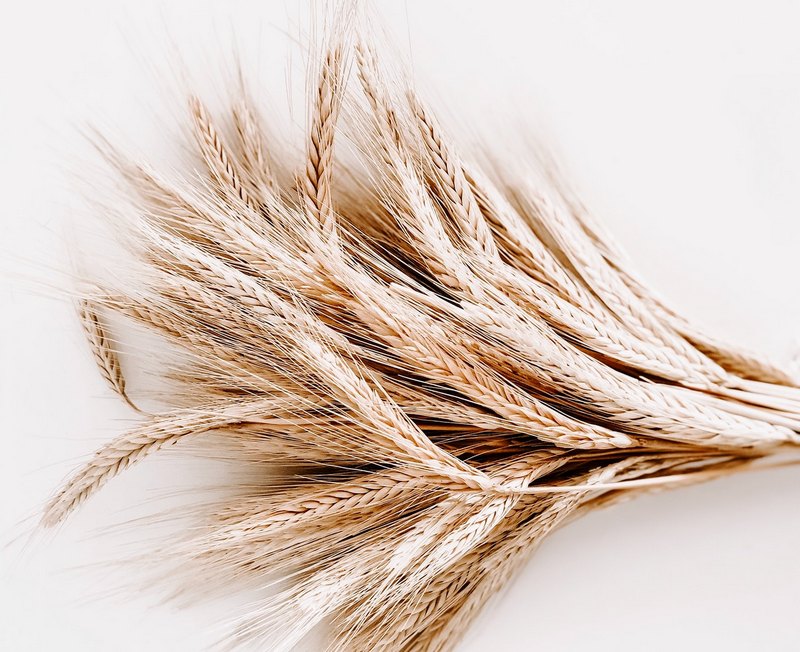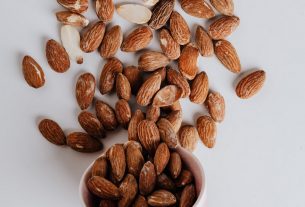Have you tried creamy chicken and kamut casserole? It is one of my favorites and it really is scrumptious. I would say that kamut is better than other kinds of wheat when prepared into dishes.
Most people these days depend on whole wheat and other types of wheat for quick and easy to prepare meals. Wheat is also preferred as a healthy food especially the organic type and free from gluten.
Since the popularity of wheat and other wheat products, some consumers are asking if kamut is really a type of organic wheat or just a processed wheat with gluten and other unhealthy food additives. There is no denying that there are some alternatives to wheat, but which can cause some autoimmune problems or allergies.
The people’s awareness on the health benefits of wheat and increasing concern of personal health prove to be the valid reasons why people opted to look for organic, fresh, and healthy food like fruits, vegetables, and wheat.
So, how can you tell the difference between wheat and kamut? Actually, kamut is just another kind of wheat which is rich in protein and has lesser gluten. It is also rich in eight essential amino acids that is best for our over-all health.
Kamut is considered as an ancient grain that only became popular nowadays due to men’s search for more healthy food.
Let us learn more about Kamut wheat from this article. This can give you more helpful information about Kamut and wheat which could be useful in the days to come or could affect your choice of wheat.
What is Kamut?
There are some information that claims Kamut as a relative or a type of modern wheat which is misconceived as a hybrid of wheat, but it is deemed as an ancient type or wheat or grain.
Kamut wheat or also known as Oriental wheat is a whole wheat with larger kernel compared to the common wheat. It is also called Khorasan wheat and though some companies claimed trademark on this wheat, there are also other distributors or farmers producing this kind of wheat in many other countries.
As to historical origin, Kamut is said to be one of the staple foods in ancient times, and is originally from Iran and its neighboring countries and other records say that it is discovered also in Egypt or was rediscovered because it has been disregarded overtime. In the 20th century America, it is said to have originated in Montana from the family of an American pilot.
Physically, Kamut kernel or grain is larger than the modern or typical wheat in the market. Its kernel also has a unique shape called humpback and has an amber color. It tastes a bit nutty and it is chewy yet firmer than other wheat.
Kamut wheat is not sensitive to dry and hot weather but thrives making it grow even more in the desert. This characteristic is an advantage to places that experiences drought because they can still plant and harvest Kamut.
Health Benefits of Kamut
Many vegans and body builders preferred Kamut over the other types of wheat because it contains higher protein than the others. It is also rich in essential amino acids which is best for building healthy muscles and bones. Others consider Kamut as a complete food or protein.
A cup of Kamut whole wheat contains about 250 calories when cooked, 11 grams of protein, and 7 grams of fiber to top its nutritive value.
Some studies also showed that one serving of Kamut wheat provides the body with all the daily needed essential minerals and an ample amount of manganese. These nutrients keep our brain and the entire nervous system functional.
Apart from protein and fiber, it is also a good source of different kinds of vitamin B as well as Zinc, Copper, Magnesium, Phosphorus, and Iron. A single serving can also give you the needed Selenium equivalent to 100% RDI together with other essential minerals.
It has all the vitamins, minerals, protein, and amino acids that our body needs. It supports healthy muscles and bones, boost the digestive and nervous systems, balances body hormones, and aids in weight management. It also boosts the immune system and detoxifies the body, especially the liver.
Evidence also showed that it can slow down or reduce inflammation. Overall, Kamut wheat is a kernel of health and goodness.
Is Kamut Healthier Than Wheat?
Kamut contains a lot of nutritive value and is healthy to consume but it also contains some gluten. The downside, people who are allergic to gluten, suffers Celiac disease or has intolerance is dissuaded from eating this wheat.
Nevertheless, it still has lesser gluten and is quicker to digest compared to other modern wheat. As stated on its health benefits, it is a lot better than other types of wheat or modern wheat.
Kamut is rich in good fatty acids and gives higher energy per calorie consumption than modern wheat. Other types of wheat have higher carbohydrates and calorie content but have lesser fiber, protein, and other nutrients found in Kamut.
As a wheat eater myself, I would recommend Kamut over other types of wheat when it comes to nutritive value.
How To Use Kamut
There are different scrumptious recipes with Kamut just like the other types of wheat, and you will never regret if you try it.
Like the other types of wheat, Kamut can be consumed as whole kernel or grain and can be used in different grain dishes like stir-fries, pilafs, and casseroles. Others enjoyed it as quinoa or rice with other dishes.
Though many wheat lovers like to soak it overnight to make it easier to cook or to make it as a substitute to oats or make into porridge, Kamut kernels can also be made crunchy for snacks or used as salad and pasta toppings.
Here are Kamut recipe you might want to try:
- Khorasan wheat salad
- Creamy chicken and Kamut casserole
- Kamut pilaf
- Kamut with roasted vegetables
- Kamut grain bowl
- Shrimp salad with Kamut
- Spicy Kamut and chickpea salad
- Kamut berry salad
- Kamut with chipotle carrots and avocado
- Tabbouleh salad

Kamut flour is also available and is usually baked into cakes, breads, and other pastries.
Remember though that when used in baking, the measurement in the recipe should be considered or altered to ensure you will get the right outcome.
Related Questions
Is Kamut anti-inflammatory?
Since Kamut wheat has all the vitamins, minerals, and amino acids that promotes health, these nutrients also helps reduce inflammation in the body, so it is claimed to have anti-inflammatory benefits. However, if the person has certain allergy to Kamut wheat and other dishes with Kamut in it, it may have an opposite effect on the person.
Which is better, Spelt or Kamut?
Spelt is considered one of the ancient types of wheat that is distinct in many European countries. Both Kamut and Spelt are types of wheat with inherent nutritive value and contains some gluten. Depending on what you crave for or the type of dish you want to prepare, each has distinctive properties that should be considered. You can try both and then decide which do you think is best for you.
What does Kamut pasta taste like?
If you have tried whole wheat pasta, then using Kamut wheat on the pasta will likely taste the same except for a very slight nutty flavor. This nutty flavor does not overcome the taste of your pasta so you can still enjoy that cheesy pasta or creamy chicken Kamut casserole.
If you choose pasta made from Kamut flour, then expect it to be lighter compared to regular your pasta.


